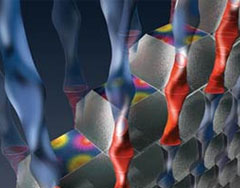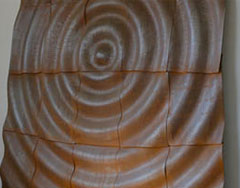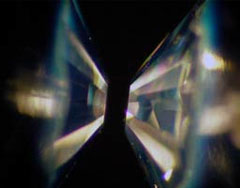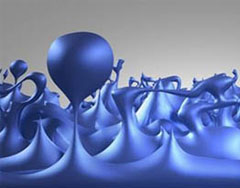Broad research
Much of modern technology has its origin in the discovery of materials with novel physical properties. Molecules comprise trillions of trillions of electrons, subtle differences in the arrangements of which drive dramatic differences in materials properties. The discovery of electronic motifs that signal widely different physical phenomena is a triumph of the field of study known as condensed matter physics. Numerous exotic physical phenomena such as for instance superconductivity – or the flow of electricity with zero resistance – at `high’ temperatures above that of liquid Nitrogen, for instance, remains a mystery that is yet to be explained in terms of an underlying pattern of electrons. Given the multitude of electronic configurations possible, an entire landscape of undiscovered physical phenomena awaits us.
Many mysterious materials properties arise from `quantum’ effects, in which each of the many electrons is intrinsically entangled with each of the others to form a giant ensemble. Unexpected new quantum properties emerge from such a complex ensemble, which are radically different from that of each individual electron. Quantum materials have the powerful potential to drive novel technological applications, given their unusual emergent properties – yet these quantum properties are notoriously challenging to understand and exploit.
The aim of our group is to design and control quantum materials. We aim to create different families of materials with the goal of accessing exotic new physics from novel electron arrangements. We further use extreme conditions ranging from strong magnetic field to high applied pressures to ultra-low temperatures to rearrange electrons into arrangements favourable for exploring interesting regions of new physics.
We study diverse materials families ranging from superconductors to quantum magnets to quantum electron liquids to battery components, and employ a breadth of transport, thermodynamic, and scattering experiments to explore their physical properties.
SES Biography
Suchitra Sebastian is University Lecturer in Physics associated with the Winton Programme in Sustainable Energy, and Royal Society University Research Fellow in Physics.
After a PhD in Applied Physics from Stanford University, she moved to the University of Cambridge as a junior research fellow in Trinity College, and subsequently research fellow in King’s College.
She is the recipient of various awards including the Lee Osheroff Richardson prize (2007), the Young Scientist Medal in magnetism (2012), the Moseley Medal (2012), and the L’Oréal-UNESCO fellowship (2013). She appeared in the 2013 Financial Times list of ‘the next big names in physics‘, and was named as one of thirty ‘exceptional young scientists’ by the World Economic Forum in 2014.
Her group’s research is currently funded by a European Research Council (ERC) Starting grant, the Royal Society, the Winton Programme in Sustainable Energy, a User Collaborative Grant with the National High Magnetic Field Laboratory awarded by the National Science Foundation (NSF), and the Department of Physics.













